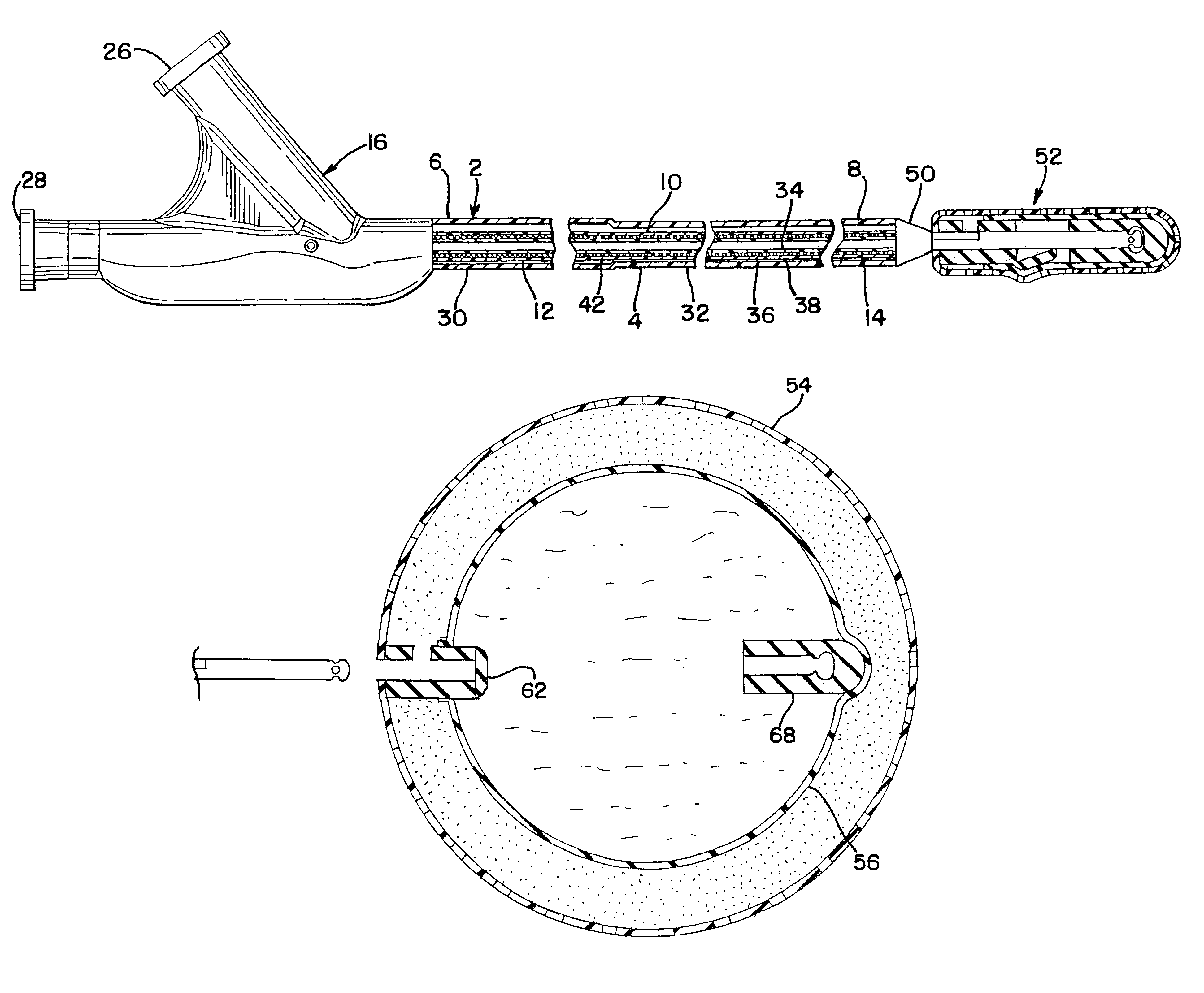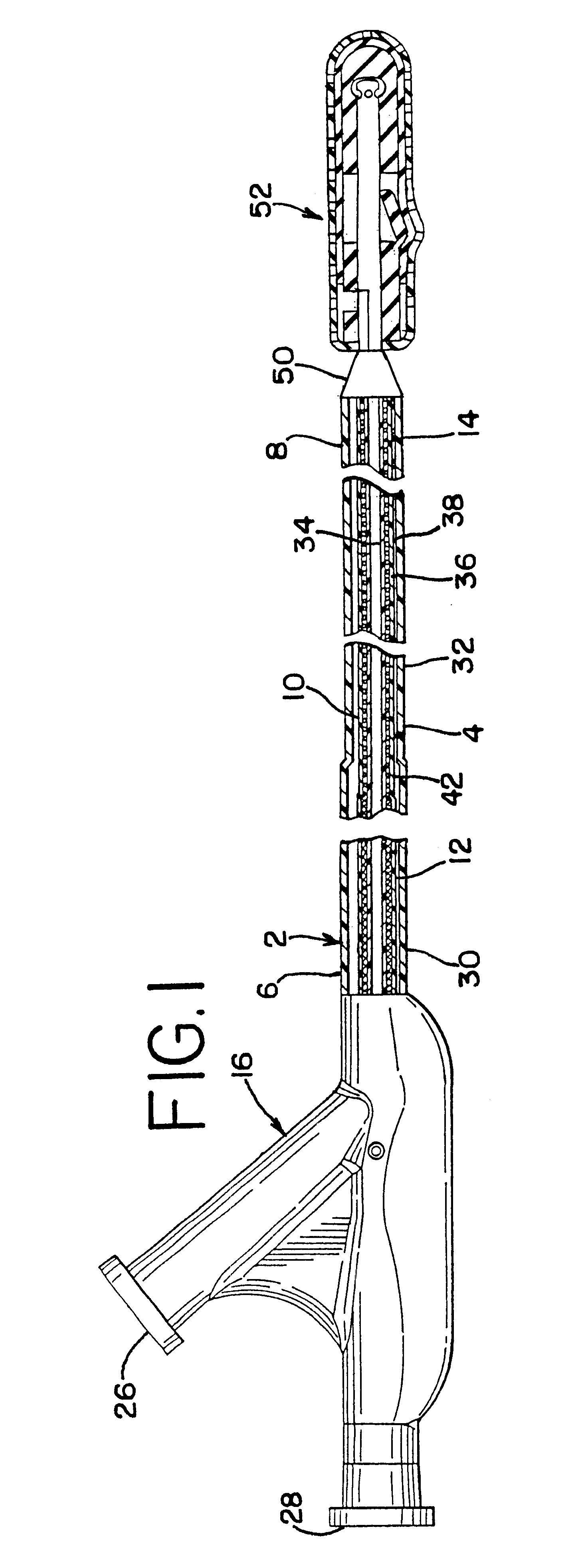Detachable balloon embolization device and method
a balloon and embolization technology, applied in the field of vascular occlusion devices, can solve the problems of insufficient filling of aneurysms, increased difficulty in procedures, and increased risk of impairmen
- Summary
- Abstract
- Description
- Claims
- Application Information
AI Technical Summary
Benefits of technology
Problems solved by technology
Method used
Image
Examples
Embodiment Construction
Turning now to the drawings, FIG. 1 illustrates a partial section view of a catheter with a detachable balloon embolization device made in accordance with the present invention. The catheter 2 includes an outer tubular member 4, having a proximal end 6 and a distal end 8, and an inner tubular member 10, having a proximal end 12 and a distal end 14. A dual port Y-connector 16 is coupled to the proximal end 6 of the outer tubular member 4 and the proximal end 12 of the inner tubular member 10. The distal end 8 of the outer tubular member 4 and the distal end 14 of the inner tubular member 10 are adapted using a catheter adapter 50 to attach to a detachable balloon embolization device or balloon assembly 52, the details of which are described below.
As illustrated, the outer tubular member 4 includes a proximal portion 30 and a distal portion 32 of differing diameters, with the proximal portion being larger than the distal portion. In addition, the proximal portion 30 is formed from nyl...
PUM
 Login to View More
Login to View More Abstract
Description
Claims
Application Information
 Login to View More
Login to View More - R&D
- Intellectual Property
- Life Sciences
- Materials
- Tech Scout
- Unparalleled Data Quality
- Higher Quality Content
- 60% Fewer Hallucinations
Browse by: Latest US Patents, China's latest patents, Technical Efficacy Thesaurus, Application Domain, Technology Topic, Popular Technical Reports.
© 2025 PatSnap. All rights reserved.Legal|Privacy policy|Modern Slavery Act Transparency Statement|Sitemap|About US| Contact US: help@patsnap.com



